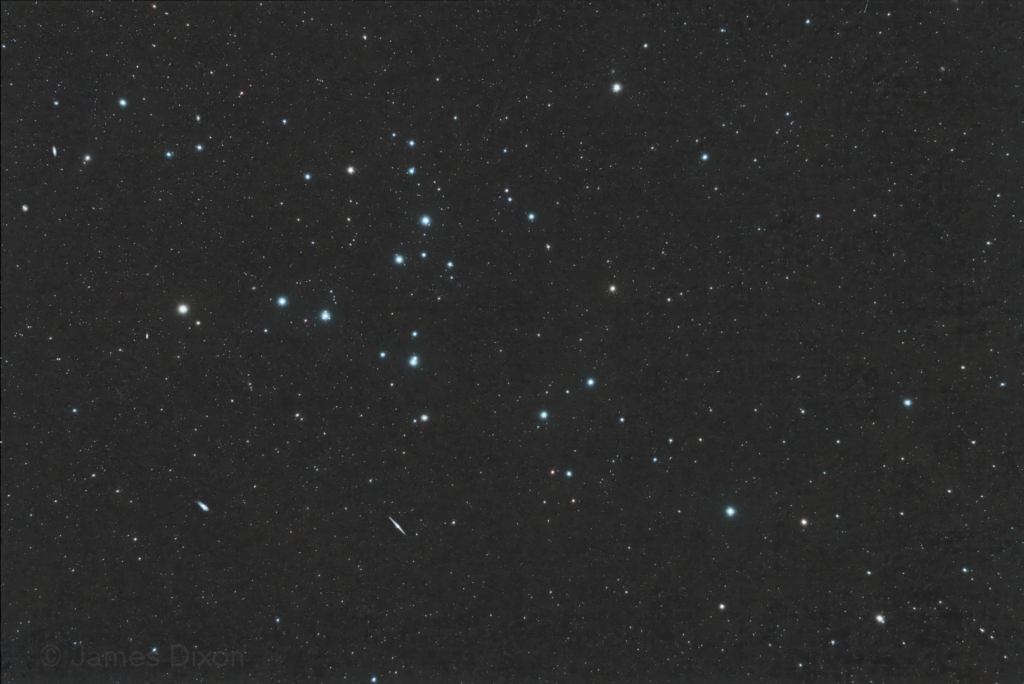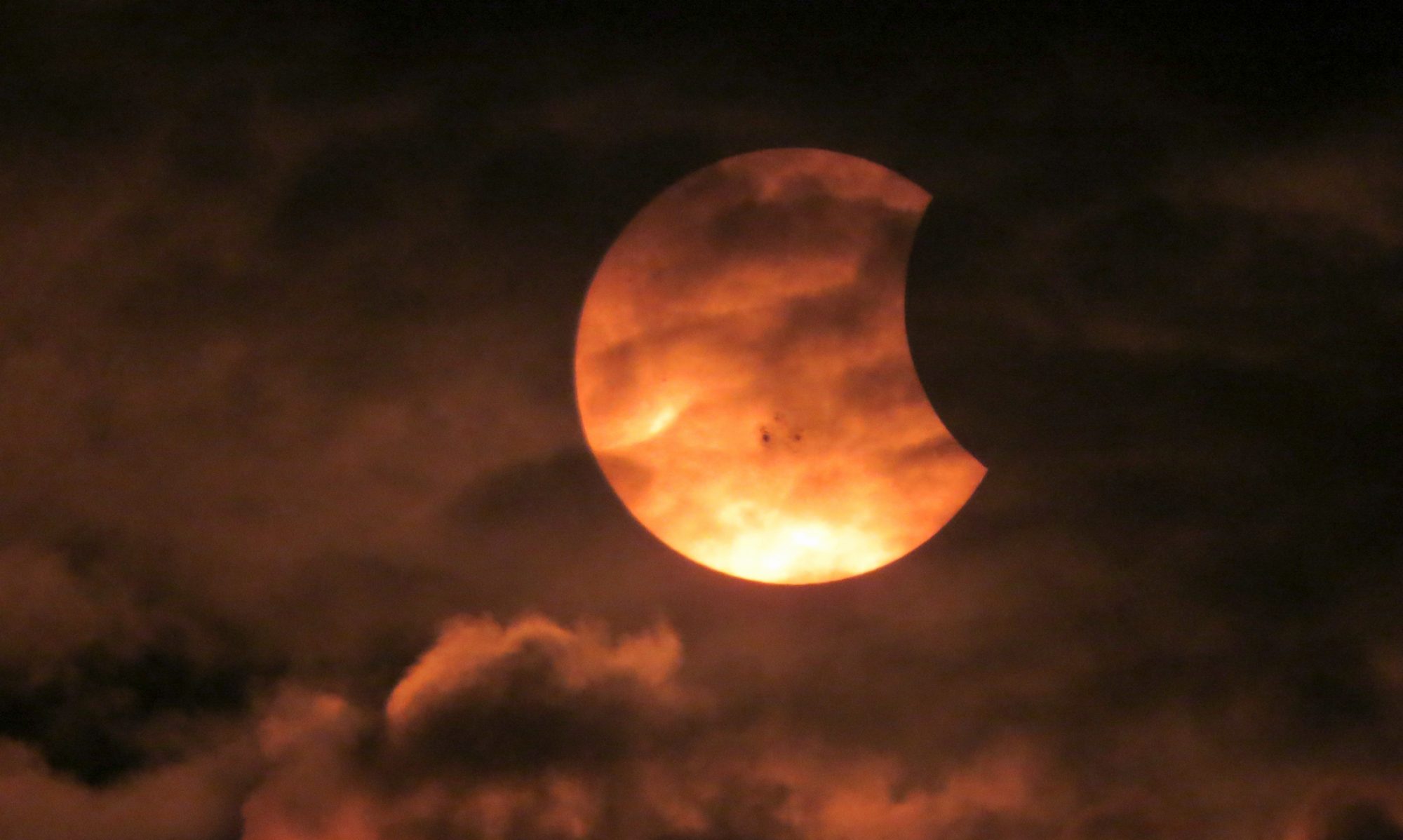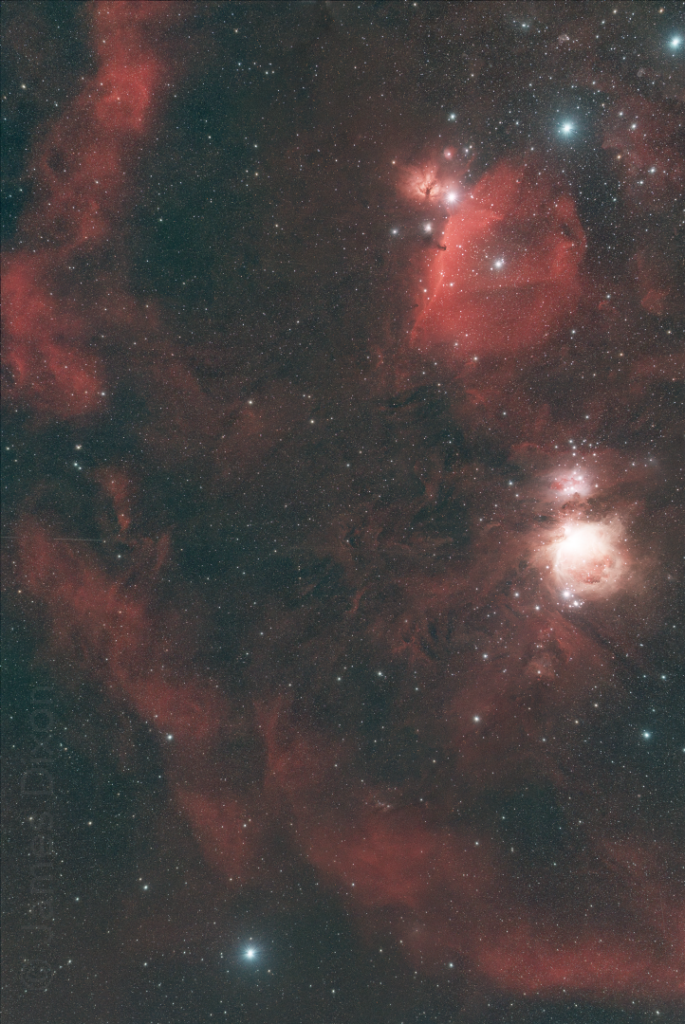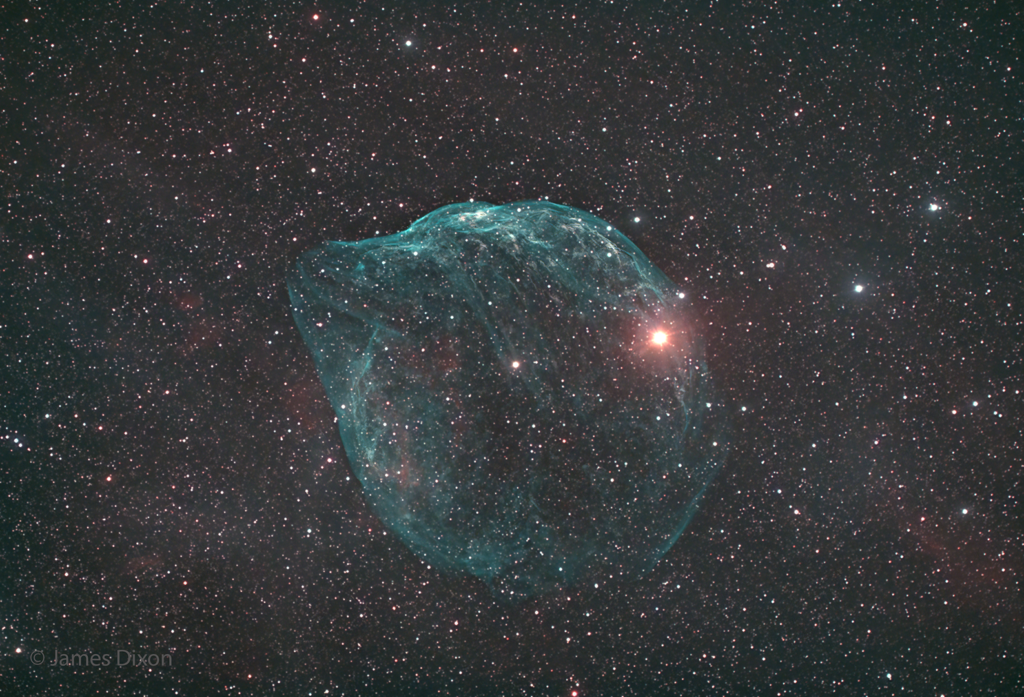
I’m not a big fan of open star clusters. These loose aggregations of dozens of stars tend to be a little boring. This one, however, has some history behind it. Originally, it represented the tail of Leo (the lion) but one of the Ptolemys renamed it after Queen Berenice, so it’s other name is “Berenice’s Hair”. The field of view here is 10 degrees by 6.6 degrees so this cluster is quite large and at a measured distance of 280 light-years, it is nearby as well. Note what I initially thought were three blemishes but turned out to be galaxies in the lower left and upper left.



